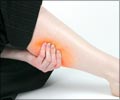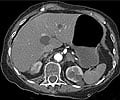Marijuana users have a threefold increased risk of developing peripheral artery disease.
- The use of marijuana has increased in recent times, especially among youngsters
- Peripheral artery disease (PAD), also known as peripheral vascular disease, refers to a condition characterized by the narrowing, hardening, or blockage of the arteries that supply blood to the extremities
- A recent study has found that using marijuana can triple the risk of peripheral artery disease
A recent study has found a relationship between marijuana use and peripheral artery disease (PAD). Marijuana users have a much higher chance of developing PAD than the overall population, according to the findings.
The Steady Incline of Marijuana and the Decline of the Vascular System
The Centers for Disease Control and Prevention (CDC) has reported that there has been an increase in the use of marijuana with nearly 50 million people reporting using it at least once (1✔ ✔Trusted SourceData and Statistics
Go to source). While many studies have been conducted to investigate the effects of marijuana use on health, little research has been conducted to investigate the influence of marijuana use on the vascular system.
PAD, a disorder in which restricted arteries reduce blood flow to the arms or legs, affects 6.5 million people in the United States and, if not treated early, can result in loss of mobility, diminished quality of life, heart attack, stroke, and death.
The researchers analyzed de-identified patient data from the National Inpatient Samples (NIS) from 2016 to 2019 who reported marijuana usage and a PAD diagnosis (2✔ ✔Trusted Source
Marijuana users three times more likely to develop peripheral artery disease
Go to source).
Patients were further classified depending on whether or not they had undergone any percutaneous lower extremity vascular intervention. The data was evaluated in a binary logistic regression model with SPSS software, a p-value of 0.001 was deemed statistically significant, and samples were normalized for comparison using predicted probabilities.
Marijuana Use can Increase the Risk of Peripheral Artery Disease by ThreeTimes
623,768 of the 30 million patients identified were diagnosed as marijuana users. Patients had an average age of 37.4 years, an even gender distribution, were more likely to be white, and were more likely to be elective admissions.2,424 of these individuals were also diagnosed with PAD. Marijuana users were more than three times more likely to develop PAD, although there was no statistically significant increase in mortality or need for percutaneous intervention.
“With the increase in marijuana use in the U.S., our findings show that users should be aware of the symptoms of PAD such as leg pain while walking, slower or no hair growth, and feelings of coldness in the leg,” said Hirva Vyas, DO, Hackensack University Medical Center, Hackensack, NJ and lead author of the study. “We know PAD is a progressive disease that can dramatically impact the quality of life, making ongoing monitoring of this patient population critical.”
References:
- Data and Statistics - (https://www.cdc.gov/marijuana/data-statistics.htm)
- Marijuana users three times more likely to develop peripheral artery disease - (https://www.eurekalert.org/news-releases/989679)
















